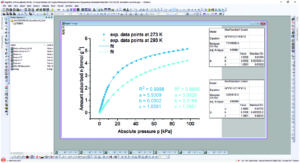Prof. Christoph Janiak and Dalton Transactions
This year, we are celebrating the 50th volume of Dalton Transactions by taking a look at some of our authors who have published over 50 articles in the journal. This week we learn what Dalton Transactions means to Professor Christoph Janiak.
Our author at a glance:
Prof. Christoph Janiak is based at the Institute for Inorganic and Structural Chemistry at Heinrich-Heine-University Düsseldorf in Germany. His research is mainly focused on porous materials and metal-organic frameworks (MOFs). For Christoph, Dalton is one of his first choices where he publishes his research and “Dalton is a very good journal for high level research where the work will be read.” Christoph also has many highly cited papers in Dalton Transactions, including two review articles that have each been cited over 3400 times.
Please can you summarise your most recent research published in Dalton Transactions?
My most recent publications in Dalton are about coordination networks and MOFs. In particular, I have published a practical guide to calculate the isosteric heat/enthalpy of adsorption via adsorption isotherms in MOFs as a Perspective, which I hope will be interesting for a broader audience.
How do you intend to expand upon your research in the future?
In the future, my research will also move to the field of electrocatalysis using MOFs and other porous materials, metal nanoparticles and ionic liquids.
What would you say are the biggest barriers which need to be overcome to expand your research?
My lack of time in view of many other duties such as refereeing (journal manuscripts, grant proposals), administrative work and a comparatively high teaching load.
You’ve published over 50 articles in Dalton Transactions, which of these works do you find to be most interesting/significant for our broad inorganic audience?
My 2003 review, Engineering coordination polymers towards applications, focused on what are now called MOFs and their properties. It was not the structures but instead the properties which are still interesting today in this exploding field, which were summarized and critically assessed in this review, including sorption and catalytic behavior, magnetism, luminescence etc.
Also, the paper published in the year 2000: A critical account on π–π stacking in metal complexes with aromatic nitrogen-containing ligands. Its reception by the scientific community came as a surprise to me.
Both papers have been cited over 3400 and 4000 times respectively, and I feel extremely honoured and greatly thank all my colleagues who made use of these two Dalton articles over the years.
Outside of your own research, please suggest a Dalton Transactions article which you think has made a significant contribution to its field?
The article which I like is the one on the “Addison tau parameter” where a geometric descriptor for the distortion of five-coordinate molecules was given (albeit not emphasized in the title): Synthesis, structure, and spectroscopic properties of copper(II) compounds containing nitrogen–sulphur donor ligands; the crystal and molecular structure of aqua[1,7-bis(N-methylbenzimidazol-2′-yl)-2,6-dithiaheptane]copper(II) perchlorate
What advice do you have for young researchers new to your field?
Read the literature, give due credit to previous publications, stay honest and self-critical with your own results and do not underestimate others who do not publish in (so-called) high-impact journals.
What does Dalton Transactions mean to you?
I am extremely thankful to Dalton Transactions to have given me the opportunity to publish my work here over the years. I am always sure that the work which I publish in Dalton will be noticed by my peers.
Why do you choose to publish in Dalton Transactions?
I am highly satisfied with their handling of the manuscripts, including quite fair referee reports.
What is your experience of publishing with Dalton Transactions?
The citations which I have received to my 52 articles in Dalton (with 19 cited over 50 times and 11 cited over 100 times) prove to me that Dalton is a very good journal for high level research where the work will be read. For me, Dalton is one of my first choices where I publish my research.
You can check out Christoph’s recent Dalton Transactions Perspective on a practical guide to calculate the isosteric heat/enthalpy of adsorption via adsorption isotherms in MOFs below.

Alexander Nuhnen and Christoph Janiak*
Dalton Trans., 2020, 49, 10295-10307
Check out the full collection of recent research published in Dalton Transactions by all of our featured Golden Authors in our Celebrating our Golden Authors collection.











